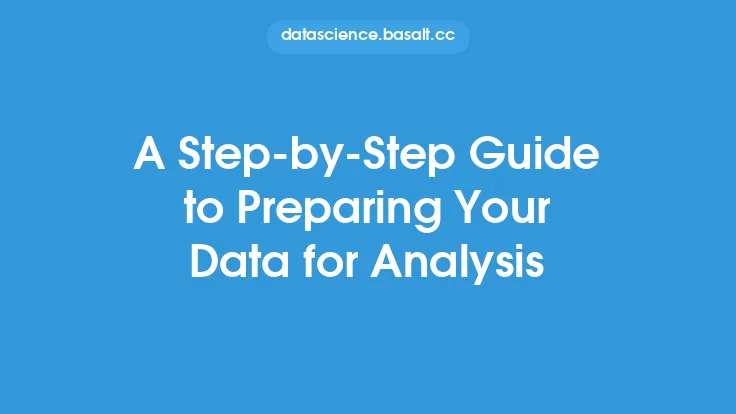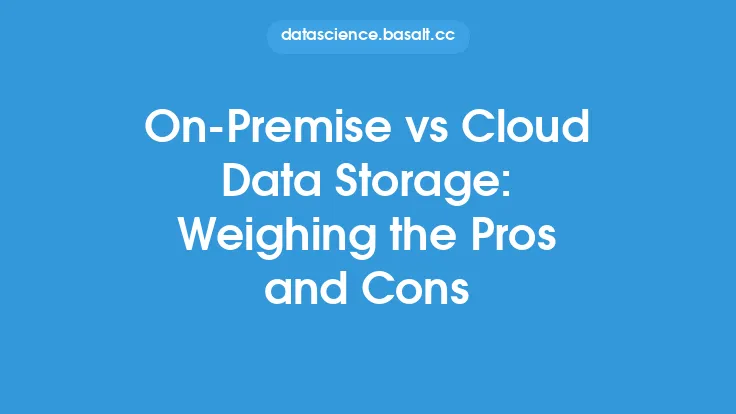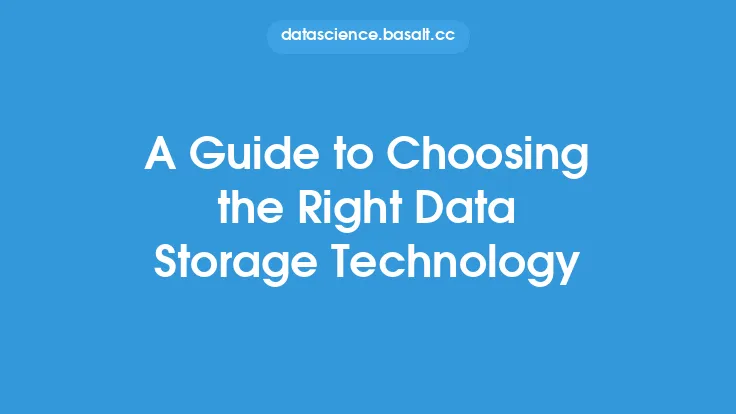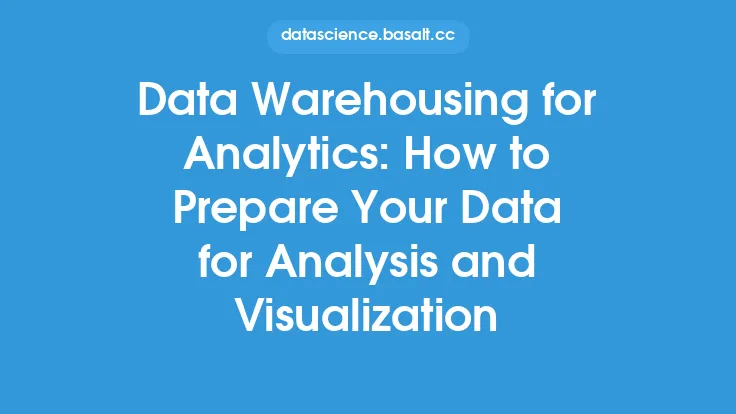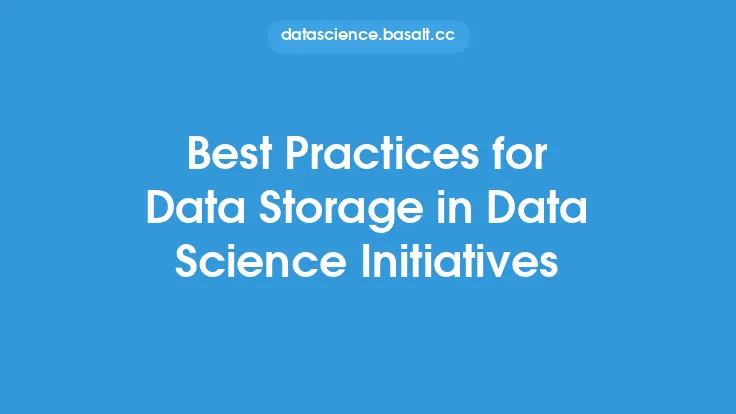As the amount of data being generated and stored continues to grow exponentially, the need for robust data storage security has become a top priority for organizations and individuals alike. Data storage security refers to the measures taken to protect data from unauthorized access, theft, or damage, and it is a critical aspect of data engineering. In this article, we will delve into the world of data storage security, exploring the various threats, technologies, and best practices that can help protect your data from unauthorized access.
Introduction to Data Storage Security Threats
Data storage security threats can come in many forms, including hacking, malware, ransomware, and physical theft. These threats can compromise the confidentiality, integrity, and availability of data, leading to significant financial and reputational losses. Some common data storage security threats include:
- Unauthorized access: This occurs when an individual or group gains access to data without permission, often through hacking or exploitation of vulnerabilities.
- Data breaches: This refers to the unauthorized release of sensitive data, which can occur due to hacking, insider threats, or physical theft.
- Malware and ransomware: These types of malicious software can compromise data by encrypting it or demanding payment in exchange for its release.
- Physical theft: This occurs when physical devices or media containing sensitive data are stolen, often resulting in unauthorized access to the data.
Data Storage Security Technologies
To combat these threats, various data storage security technologies have been developed. Some of the most common include:
- Encryption: This involves converting data into an unreadable format using algorithms and keys, making it inaccessible to unauthorized individuals.
- Access control: This refers to the use of authentication and authorization mechanisms to control who can access data and what actions they can perform.
- Firewalls: These network security systems monitor and control incoming and outgoing traffic, blocking unauthorized access to data.
- Intrusion detection and prevention systems: These systems monitor network traffic for signs of unauthorized access or malicious activity, alerting administrators and blocking threats in real-time.
- Secure protocols: Protocols such as HTTPS, SFTP, and SSH provide secure communication channels for data transfer, protecting against eavesdropping and tampering.
Data Storage Security Best Practices
In addition to leveraging data storage security technologies, there are several best practices that can help protect data from unauthorized access. Some of these include:
- Implementing a least privilege access model, where users are granted only the necessary permissions to perform their tasks.
- Conducting regular security audits and risk assessments to identify vulnerabilities and weaknesses.
- Using strong passwords and multi-factor authentication to prevent unauthorized access.
- Encrypting data both in transit and at rest, using secure protocols and algorithms.
- Implementing incident response plans and disaster recovery procedures to quickly respond to security incidents and minimize data loss.
Secure Data Storage Solutions
When it comes to secure data storage solutions, there are several options available. Some of the most common include:
- Hard disk drives (HDDs) and solid-state drives (SSDs) with built-in encryption and access control features.
- Secure flash drives and USB drives, which use encryption and authentication to protect data.
- Cloud storage services, which provide secure data storage and transfer using encryption, access control, and secure protocols.
- Data storage appliances, which are designed to provide secure data storage and protection for sensitive data.
- Tape storage systems, which provide a secure and offline storage solution for sensitive data.
Data Storage Security Standards and Regulations
To ensure the security and integrity of data, various standards and regulations have been established. Some of the most notable include:
- General Data Protection Regulation (GDPR): A European Union regulation that sets standards for data protection and privacy.
- Health Insurance Portability and Accountability Act (HIPAA): A US regulation that sets standards for the protection of sensitive healthcare data.
- Payment Card Industry Data Security Standard (PCI DSS): A standard for the protection of payment card data.
- National Institute of Standards and Technology (NIST) Cybersecurity Framework: A framework for managing and reducing cybersecurity risk.
Conclusion
In conclusion, data storage security is a critical aspect of data engineering, and it requires a comprehensive approach that includes technologies, best practices, and standards. By understanding the various threats, leveraging secure data storage solutions, and implementing best practices, organizations and individuals can protect their data from unauthorized access and ensure its confidentiality, integrity, and availability. As the amount of data being generated and stored continues to grow, the importance of data storage security will only continue to increase, making it essential to stay informed and up-to-date on the latest technologies, threats, and best practices.

